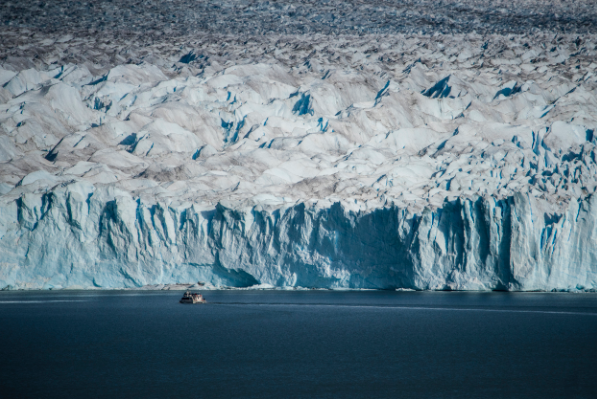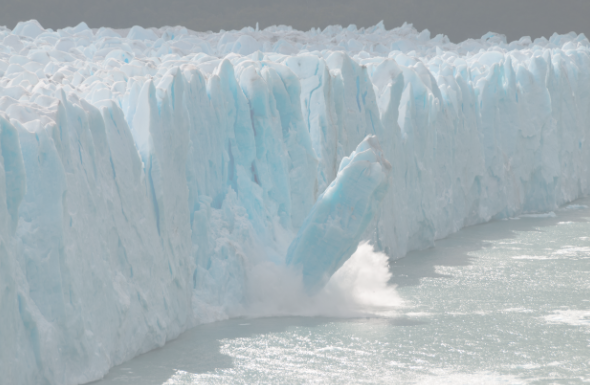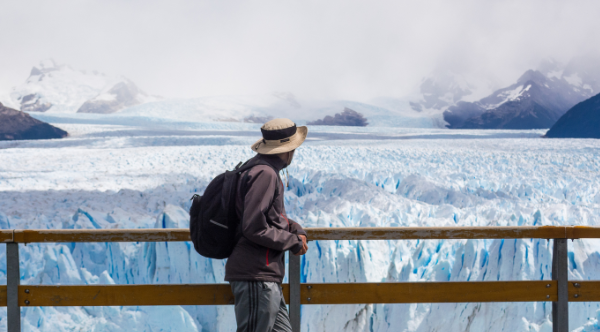The mighty Perito Moreno glacier is one of the most spectacular sights in Argentine Patagonia. Located in the Los Glaciares National Park, the Perito Moreno glacier is one of the largest of the 48 glaciers emanating from Patagonia’s Southern Ice Field. Here, we run through 10 amazing Perito Moreno glacier facts to prime you for your trip.
1. Perito Moreno is not in Perito Moreno
When you’re planning your visit, there’s a particular one of our Perito Moreno glacier facts you should keep in mind – Perito Moreno glacier and Perito Moreno town are completely different things. Just to keep you on your toes, the Perito Moreno glacier isn’t in Perito Moreno – in fact, the glacier’s namesake lies 600 kilometers north of the national park. The nearest settlement is the small village of El Calafate, which is approximately 78 kilometers to the west of Perito Moreno glacier.
2. But if it’s not in Perito Moreno, why’s it called Perito Moreno?
The Perito Moreno glacier was named in honor of the Argentinian explorer Francisco Moreno, who played an important role in the border dispute between Argentina and Chile in the 19th century. In addition, the term ‘perito’ refers to his nickname, which is a Spanish colloquialism for ‘specialist’.
3. It’s big

Perhaps the most interesting of our Perito Moreno glacier facts is its sheer scale. Covering a total of 100 square miles, the glacier is 3 miles wide and rises 78 meters above the lake Lago Argentino, with its deepest point stretching to approximately 700 meters.
4. It’s fresh water
Impressively, the Perito Moreno glacier is the third largest reserve of fresh water on the planet, surpassed only by the Antarctic and Greenland ice sheets.
5. It’s old
The Perito Moreno glacier began to form during the last Ice Age, which started approximately 2.6 million years ago and ended around 11,700 years ago. Scientists calculate that the Perito Moreno glacier is approximately 18,000 years old.
6. It’s growing
Global warming means that most glaciers are retreating. Subsequently, melting polar ice caps and glacial recession in the Himalayas, the Alps and other parts of the Patagonian Ice Field pose a serious threat to our ecosystem. However, the Perito Moreno glacier is an exception – it’s advancing, moving forward around 2 meters a day.
7. Every five years, there are cataclysmic ruptures
About every five years or so, the advancing glacier will reach the banks of Lago Argentino. Consequently, the glacier dams the southern part of the lake, creating a separate body of water known as Brazo Rico. However, as the water level rises, Brazo Rico creates enormous pressure against the wall of ice. Eventually, the ice ruptures and huge chunks of ice fall into the lake. The last major rupture was on January 19, 2013.
8. But you can see some mini-ruptures for yourself

Although it’s pretty safe to say you wouldn’t want to be around to witness a major rupture, you can see the awesome spectacle on a smaller scale about every half an hour. The best time to see a mini-rupture is in the afternoon, where visitors can see shards of ice tumble into Lago Argentino safely positioned on the viewing platform.
9. Plus, you can even trek on it
Different tour operators offer two types of trekking on the glacier. The first is a mini-trek, which takes about an hour and a half. The second is the complete experience, where guides take you on a five-hour glacial excursion. Therefore, depending on your budget and endurance, there’s a glacier hike for everyone.
10. And it’s easy to get to
The bus journey to the glacier from El Calafate takes about an hour and a half and costs 560 pesos for a round-trip. To book your ticket, simply arrive at the bus station, where there are a number of different operators to choose from with standardized prices. Additionally, it’s 500 pesos to enter the park – but considering the views, it’s worth it.
More Perito Moreno glacier facts to discover

The Perito Moreno glacier is considered by many to be the 8th wonder of the world. With so many interesting Perito Moreno glacier facts to discover, all that’s left is to book your Patagonian adventure.
No comments yet
There are no comments on this post yet.






Leave a comment